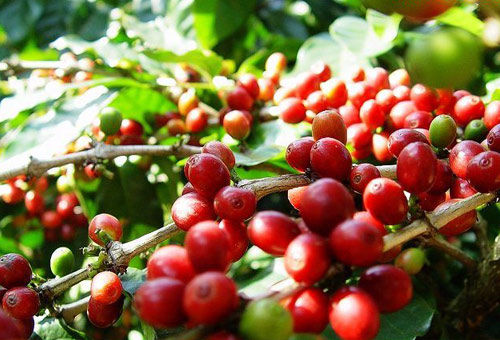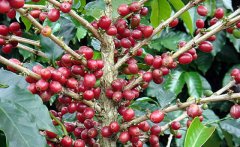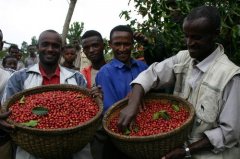Ethiopian water-washed boutique coffee from the Yega Shirley Fidama Cooperative
There are eight major producing areas in Ethiopia: Ekempti, Limu, Illubabor, Djimma, Harrar, Teppi/Bebeka, Sidamo and Yirgacheffe. Yirgacheffe is located in the Gedeo region of southern Ethiopia, and the jurisdiction of this area is better known as Yegashafi and Kochere. As the coffee produced by Yirgacheffe has a unique flavor and is widely loved, it has its own style in product classification and has always occupied a place in the global boutique coffee market. Yirgacheffe, located in Sidama province, is itself a small town, with three small producing areas Wenago, Kochere and Gelena Abaya nearby. Because the flavor of coffee produced is almost the same as that of Yega Sheffield, Kochere is also classified as Yega Sheffield. Ethiopia implemented a new trading and grading system in November 2009. the Commodity Exchange (ECX) was set up, and coffee and other agricultural products were auctioned by this official body. In addition to Yega Xuefei, three new by-production areas, Wenago, Kochere and Genlena Abaya, were added. It can be seen that the flavor of these three production areas is very meticulous and can be subdivided. Since the implementation of the ECX system in 2008, most raw coffee beans have been sold by auction, but cooperatives are not under this jurisdiction, and they can directly contact buyers, negotiate prices and export.
The Dama Coop Cooperative (Dama Coop) is one of the 26 alliances of the Yegashev Coffee Farmers' Cooperative Union (The Yirgacheffe Coffee Farmers Cooperatives Union) (YCFCU). YCFCU now represents more than 50, 000 coffee farmers belonging to more than 300000 family representatives, founded in June 2002. all 26 alliances are located in the southern Gedeo region of Ethiopia and is an important coffee producing area in Ethiopia. The Dama Cooperative (Dama Coop), made up of 1728 male and 237 female family members of small coffee farmers, located in the Yirgacheffe producing area, was founded in 1979 and joined the YCFCU Cooperative Alliance in 2002. These small coffee farmers cultivate an average of less than 4 hectares of coffee at an altitude of about 1800-2200 meters. Coffee varieties are mainly a mixture of Typica and Heirloom (local native species). Every one or two years, members of the cooperative will vote in an election to elect an executive committee, and the executive committee can decide on the purchase of new equipment, exchange business information with members, and how to pay for transactions. In addition, YCFCU will also assign professional managers to cooperatives to provide guidance and advice on harvest, production and other procedures, so as to increase production and improve quality. The establishment of the cooperative allows its farmers to avoid low-cost exploitation by purchasers, and when the economy is in trouble, the cooperative can also provide loan assistance, which is very positive for both farmers and coffee production.
This batch of Dama Cooperative (Dama Coop) is a washing batch. Flavor features: lemon peel, black tea, dried longan, flower fragrance, kumquat, sweet and smooth, clear acidity, a variety of fruit floral flavor, sweet aftertaste.

Important Notice :
前街咖啡 FrontStreet Coffee has moved to new addredd:
FrontStreet Coffee Address: 315,Donghua East Road,GuangZhou
Tel:020 38364473
- Prev

Ethiopia washed Sidamo Coffee Raw Bean boutique Coffee Manor
The Sidamo producing area, which is 1400-2200 meters above sea level, is a famous boutique coffee area in southern Ethiopia, bordering Kenya. The washed Sidamo is light green, the beans are small, the growth is oval, the fruit is full, the average quality is good, the smell is fragrant and mellow, a drop of entrance, endless aftertaste, with wild beauty. The coffee flavor of Sidamo is very diverse and different.
- Next

Essex, Damo, Ethiopia, Ethiopia, Sidama, Shaqiso production area, elevated bed sun sun Heirloom boutique coffee.
The coffee flavor of Sidamo is very diverse, because of the different soil composition, regional microclimate and countless native coffee varieties, the coffee produced in each urban area has obvious differences and characteristics. Sidamo producing area (Sidama) is located in the south of Ethiopia. The industry here is mainly agricultural, and the coffee growing area is located around the Great Rift Valley (Great Rift Valley) of East Africa.
Related
- Does Rose Summer choose Blue, Green or Red? Detailed explanation of Rose Summer Coffee plots and Classification in Panamanian Jade Manor
- What is the difference between the origin, producing area, processing plant, cooperative and manor of coffee beans?
- How fine does the espresso powder fit? how to grind the espresso?
- Sca coffee roasting degree color card coffee roasting degree 8 roasting color values what do you mean?
- The practice of lattes: how to make lattes at home
- Introduction to Indonesian Fine Coffee beans-- Java Coffee producing area of Indonesian Arabica Coffee
- How much will the flavor of light and medium roasted rose summer be expressed? What baking level is rose summer suitable for?
- Introduction to the characteristics of washing, sun-drying or wet-planing coffee commonly used in Mantenin, Indonesia
- Price characteristics of Arabica Coffee Bean Starbucks introduction to Manning Coffee Bean Taste producing area Variety Manor
- What is the authentic Yega flavor? What are the flavor characteristics of the really excellent Yejasuffi coffee beans?

